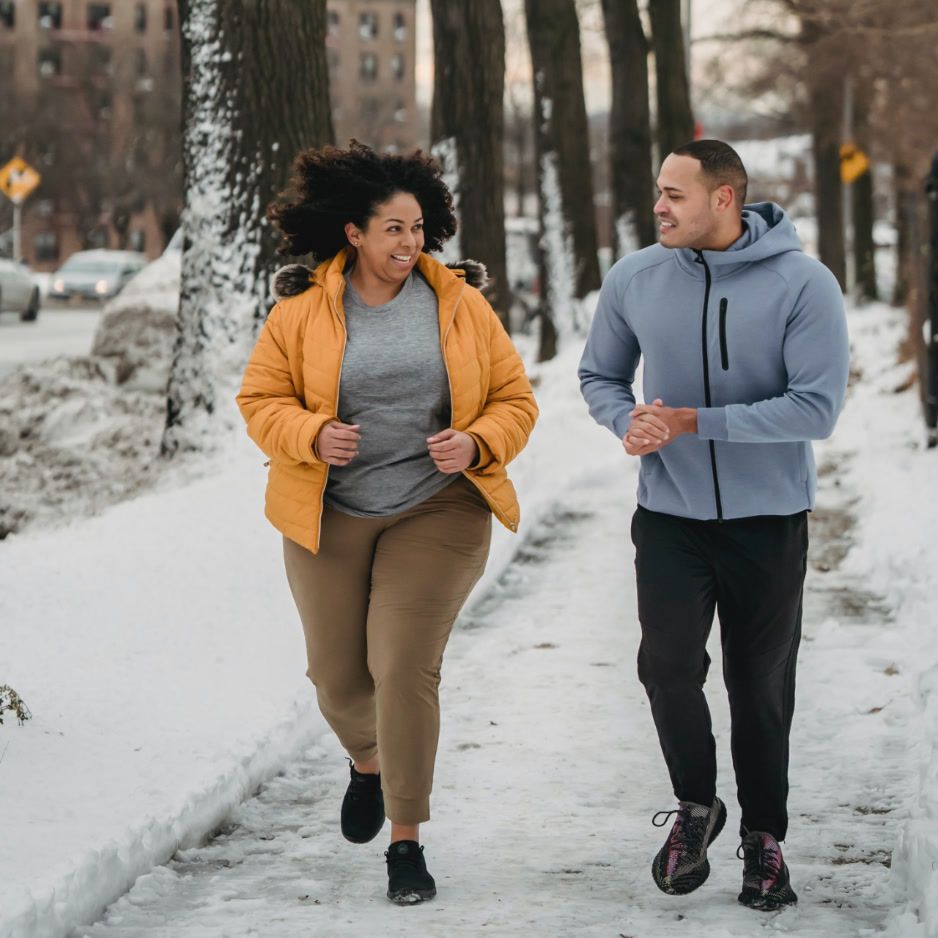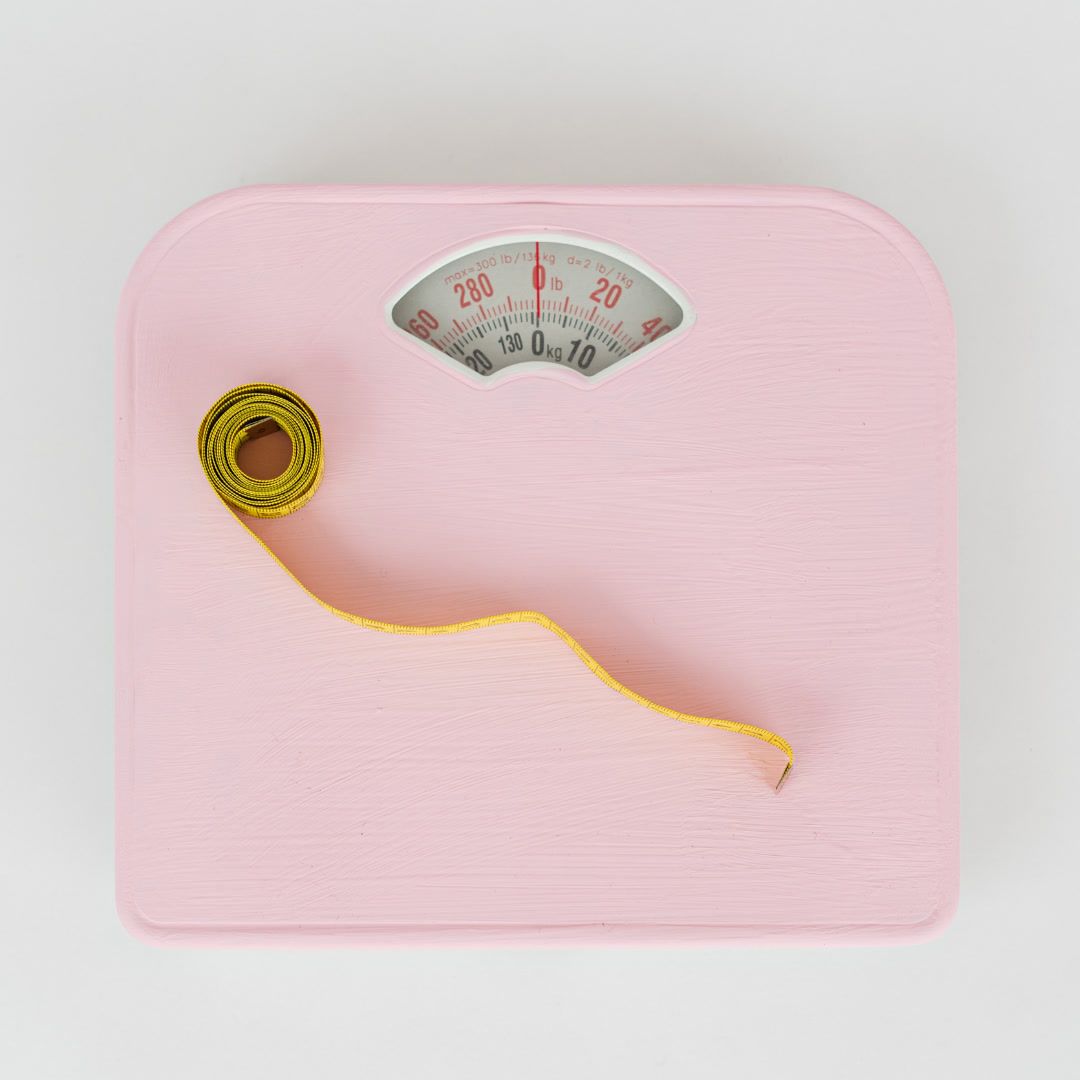Toned Thighs: A Beginner's Guide to Muscle and Fat Loss

Toned Thighs: A Beginner-Friendly Roadmap to Muscle, Fat Loss, and Confidence
Strong, defined thighs do more than look good—they power your stride, support your knees, and boost confidence in shorts or on steep climbs.
Yet the word “toned” can be misleading. In practice, developing that firm, athletic look requires two complementary steps:
- Add lean muscle for shape and strength.
- Lose the layer of fat that hides that muscle.
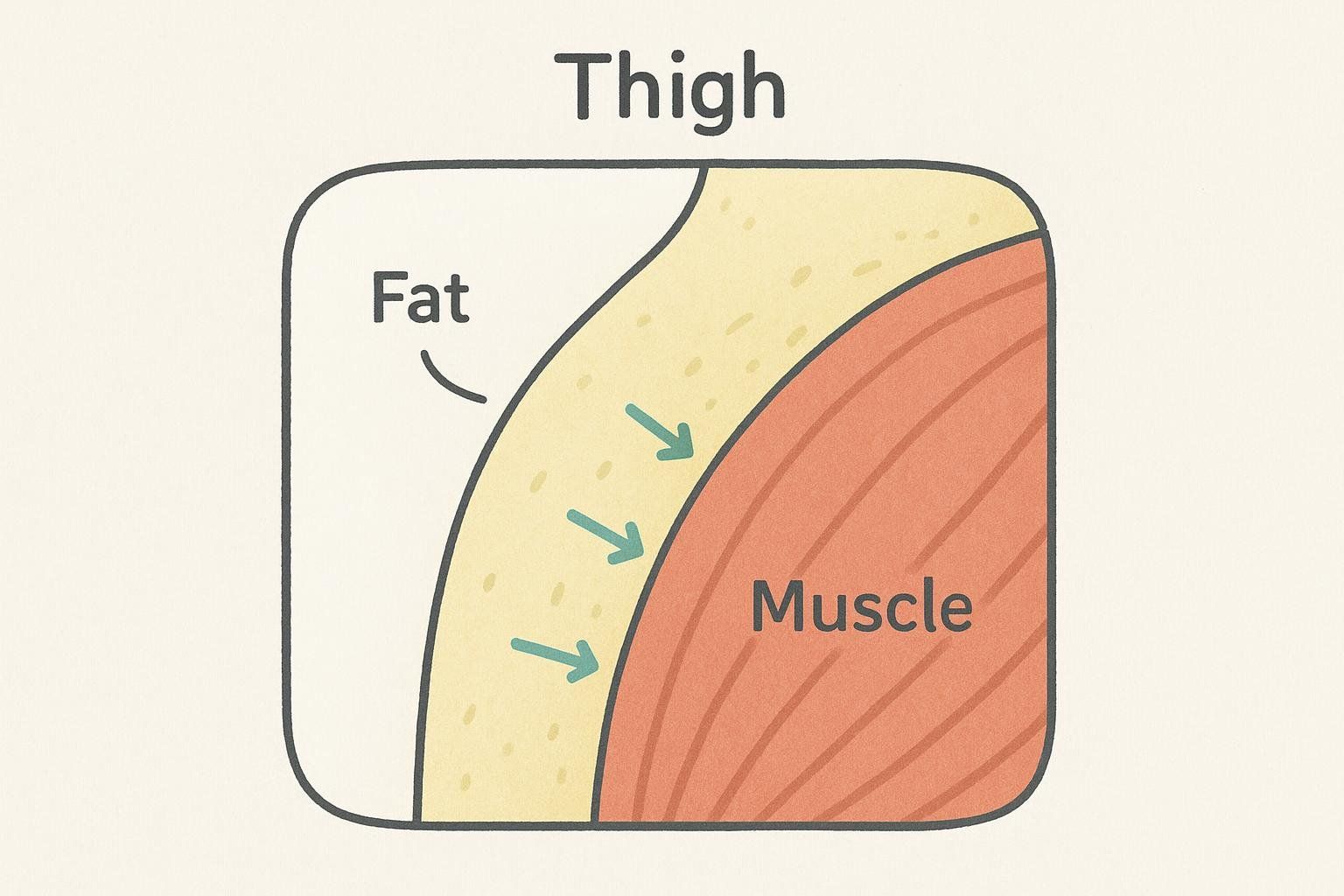
You need both pieces. The workouts below stimulate muscle growth, while a modest calorie deficit and protein-focused nutrition reveal the definition you earn.
This guide gives beginners everything needed to create firmer, more sculpted thighs:
- Three 30-minute thigh circuits (no gym required)
- Proven moves to lift and firm softer tissue
- Clear form tips for inner, outer, front, and back thigh muscles
- Recovery and nutrition habits that drive fat loss and muscle gain
- Insights from a BodySpec DEXA scan so you can see progress—not just guess
Whether you’re squeezing in a routine during nap time or brand-new to strength training, consider this your thigh-toning blueprint.
What “Toned” Really Means: Muscle + Less Fat
If your thighs feel “soft,” it’s because there’s not enough visible muscle or there’s a little extra fat covering that muscle (often both). A toned look comes from:
- Progressive strength training → tells your body to keep or build muscle.
- Nutrition that favors fat loss → slight calorie deficit, adequate protein, balanced carbs & fats.
Too much deficit and you’ll lose muscle; too little and the fat won’t budge. Think slow and steady: 0.5–1 lb of total weight change per week is realistic for most beginners.
Why Thighs Can Lose Firmness
- Low muscle tone: Less contractile tissue means less underlying shape.
- Higher body-fat levels: Fat is soft by nature and can conceal definition.
- Extended inactivity: Long bouts of sitting reduce muscle activation and circulation, which can add to that loose sensation over time.
Focusing on both strength work and steady movement addresses all three factors.
Beginner Quick-Start Checklist
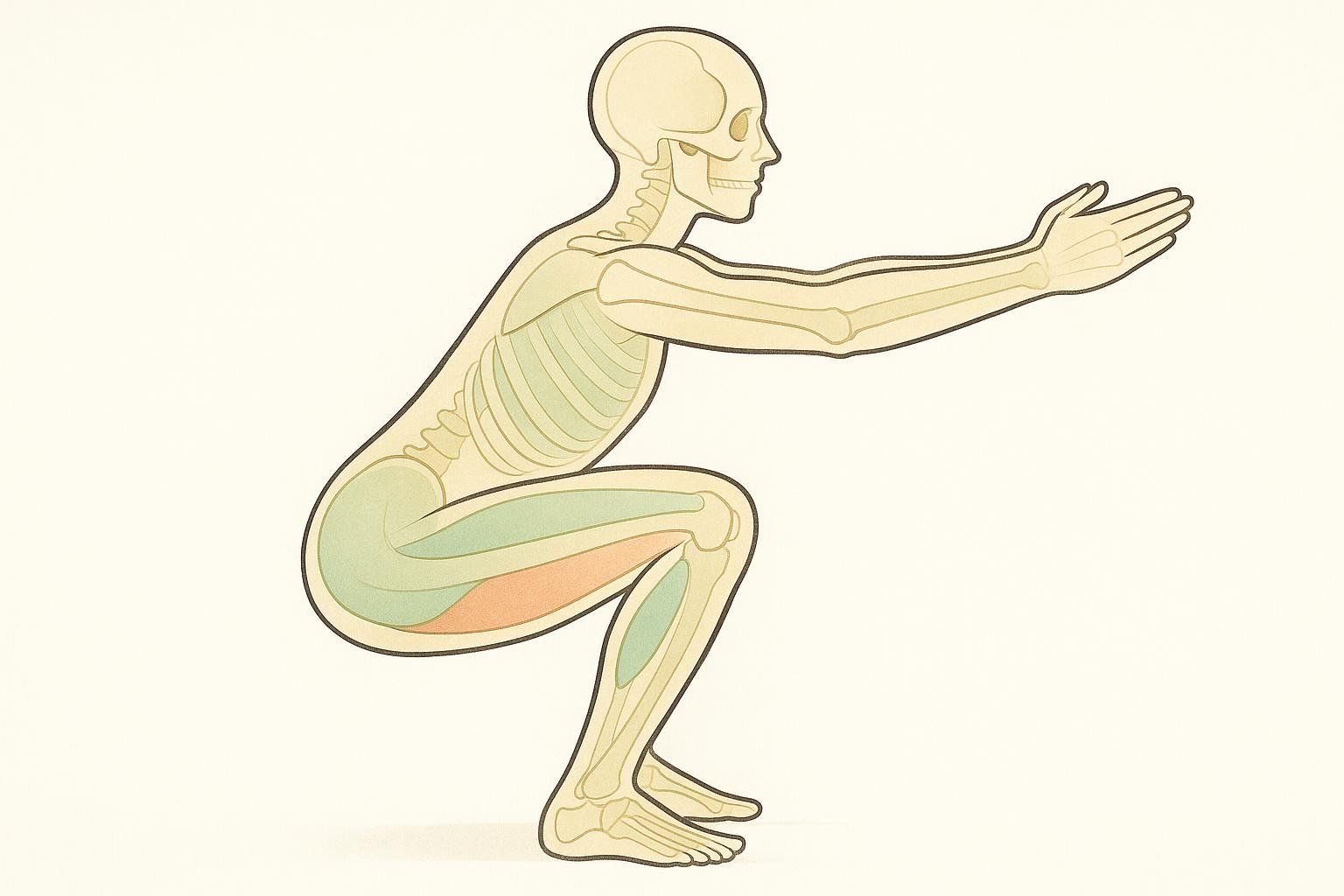
- Train thighs 2–3 × per week with 6–8 total work sets for the entire thigh session at first. Add sets, reps, or resistance only when form feels solid.
- Pick compound moves first (squats, lunges). They hit many muscles at once and burn more calories.
- Keep rest 45–60 seconds—enough to catch your breath without getting cold.
- Aim for 150 minutes of moderate cardio weekly (brisk walk, cycling) or 75 minutes of vigorous cardio—the levels recommended by the CDC Physical Activity Guidelines. Cardio helps maintain the calorie deficit that reveals muscle.
- Eat enough protein. Aim for a total daily intake of 0.7–1.0 g per lb of body weight, distributed across meals, to protect muscle during fat loss (2018 meta-analysis).
- Check progress every 4–6 weeks with mirror photos, thigh measurements, or a BodySpec DEXA scan.
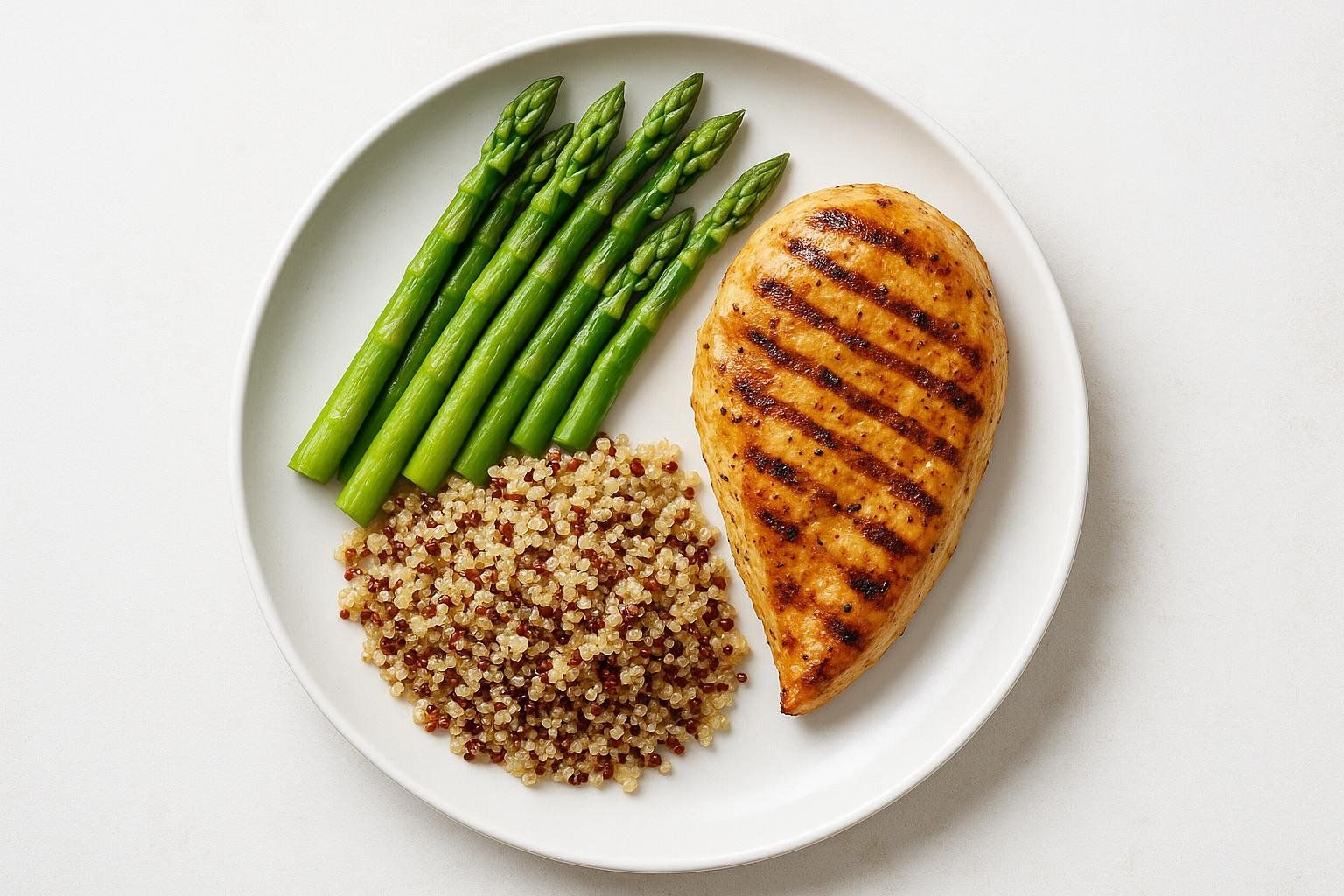
Meet Your Thigh Muscles (and Why Beginners Should Care)
| Region | Primary Muscles | Everyday Role |
|---|---|---|
| Front | Quadriceps (four muscles) | Straighten the knee, stand up from a chair |
| Back | Hamstrings | Bend the knee, power you upstairs |
| Inner | Adductors & gracilis | Stabilize hips and knees, help balance |
| Outer | Vastus lateralis, TFL, gluteus medius/minimus | Keep knees tracking, move leg sideways |
Balanced training strengthens these supportive muscles—especially the gluteus medius and adductors—which helps stabilize the knee joint and can reduce discomfort during activities like squats.
Can You Spot-Reduce Thigh Fat?
Short answer: no. Fat loss is body-wide. The good news is that lower-body strength moves do burn serious calories and help maintain muscle while you’re in a deficit. Pair the workouts below with the nutrition tips later in this article and let consistency do the rest.
30-Minute Beginner Circuits
Each circuit includes a quick warm-up, four moves, and a finisher. Perform 2 rounds your first week, add a third round when it feels doable. Rest 45 seconds between moves, 60 seconds between rounds.
Circuit 1 – Equipment-Free Foundations
| Move | Reps |
|---|---|
| Bodyweight Squat (to a chair if needed) | 12 |
| Reverse Lunge (R/L) | 10 each |
| Lateral Lunge | 10 each |
| Glute Bridge (hold 2 s at top) | 15 |
| Finisher: Wall-Sit Hold | 30 s |
Why it works: Even bodyweight squats recruit the adductor magnus—your inner-thigh powerhouse—helping beginners hit multiple areas in one move (Stronger by Science analysis).
Circuit 2 – Resistance-Band Burn
Add a light loop band once Circuit 1 feels easy.
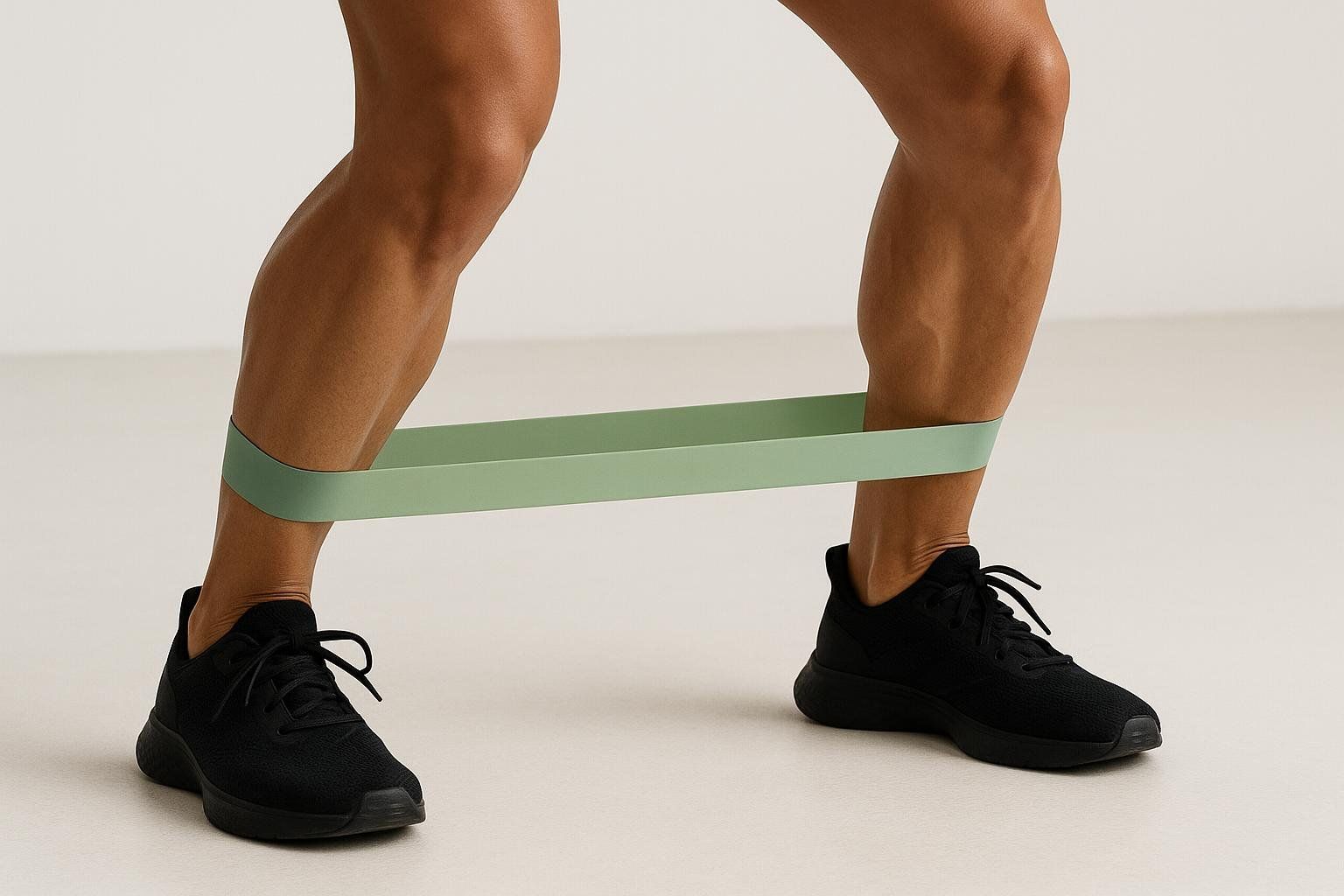
| Move | Reps |
|---|---|
| Banded Squat + Side Step | 12 |
| Monster Walk (forward/back) | 16 steps |
| Clamshell | 12 each |
| Single-Leg Hip Thrust (use couch) | 8 each |
| Finisher: Mini-Band Pulse Squat | 30 s |
Why it works: The loop band adds sideways tension that fires up the hip stabilizers. An electromyography study in Clinical Biomechanics found that placing the band around the ankles or feet during monster walks significantly increased gluteus medius activation compared with knee placement.
Circuit 3 – Low-Impact, Joint-Friendly Series
Ideal for postpartum or sore knees.
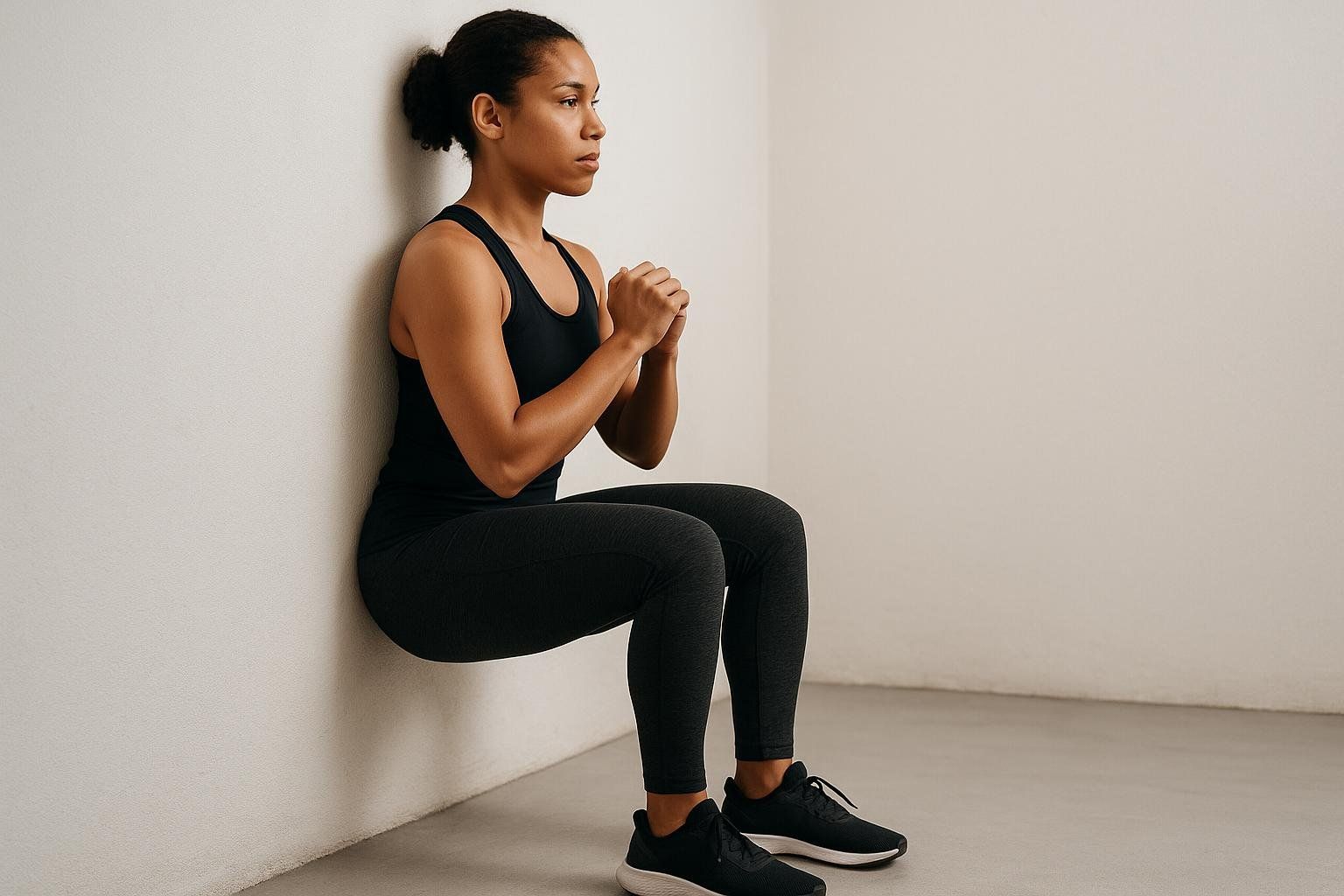
| Move | Duration/Reps |
|---|---|
| Wall-Sit Calf Raise | 30 s |
| Seated Straight-Leg Raise | 12 each |
| Step-Up to Balance (low step) | 10 each |
| Standing Hip Adduction (hold wall) | 12 each |
| Finisher: Static Glute Bridge | 45 s |
Why it works: These closed-chain moves keep your feet planted, reducing joint stress while still recruiting quads, adductors, and glutes. Research in the Journal of Orthopaedic & Sports Physical Therapy showed that forward and lateral step-up variations impose lower patellofemoral joint stress than step-downs, making them knee-friendly (PFJ stress study).
Programming Pointers for True Beginners
- Week 1: Pick ONE circuit, two rounds, 2 days that week.
- Week 2–3: Three rounds, still 2 days.
- Week 4: Add a third training day or graduate to another circuit in this guide (e.g., move from Circuit 1 to Circuit 2 with resistance bands), or increase the challenge of your current circuit by slowing the tempo or adding light external load.
Bonus Mini-Sessions (Optional)
Structured 30-minute circuits are your priority for improving thigh firmness and tone. If time permits, squeeze in a single round—say, glute bridges and a wall-sit—while dinner heats up to boost daily movement. Treat these as extra credit, not a substitute.
Form Checkpoints (Read These Before Your First Rep)
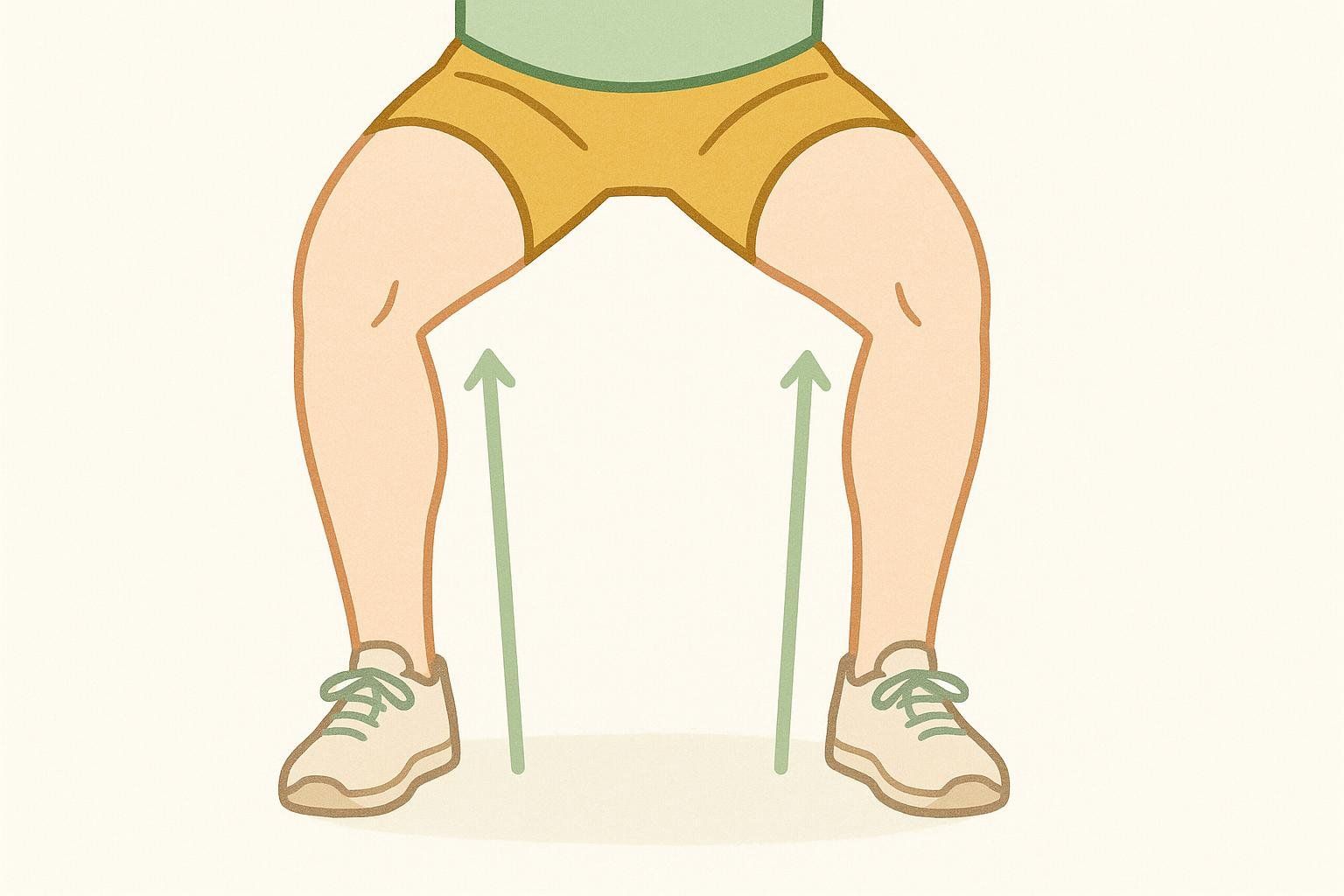
- Knees track toes. Avoid letting them cave inward—it stresses ligaments.
- Chest tall, spine neutral. Rounding steals work from target muscles.
- Pain-free range first, deeper later. Half squats today can turn into full squats next month.
Need more visuals? Check our beginner photo series in Strength Training for Beginners.
Recovery: Where Tone Actually Happens
Your body reshapes itself between workouts.
| Tool/Strategy | Why It Matters |
|---|---|
| 7–9 hrs sleep | Growth hormone for repair |
| 48 hrs between thigh days | Lets muscles rebuild and reduces soreness |
| Foam roll quads/adductors | A 2014 controlled trial in the Journal of Strength & Conditioning Research found post-exercise foam rolling cut muscle soreness and sped recovery |
| 10-minute easy walk | Improves blood flow, aids recovery |
For more detail, see The Importance of Rest Days and Active Recovery.
Nutrition: The Other 23 Hours of Your Day
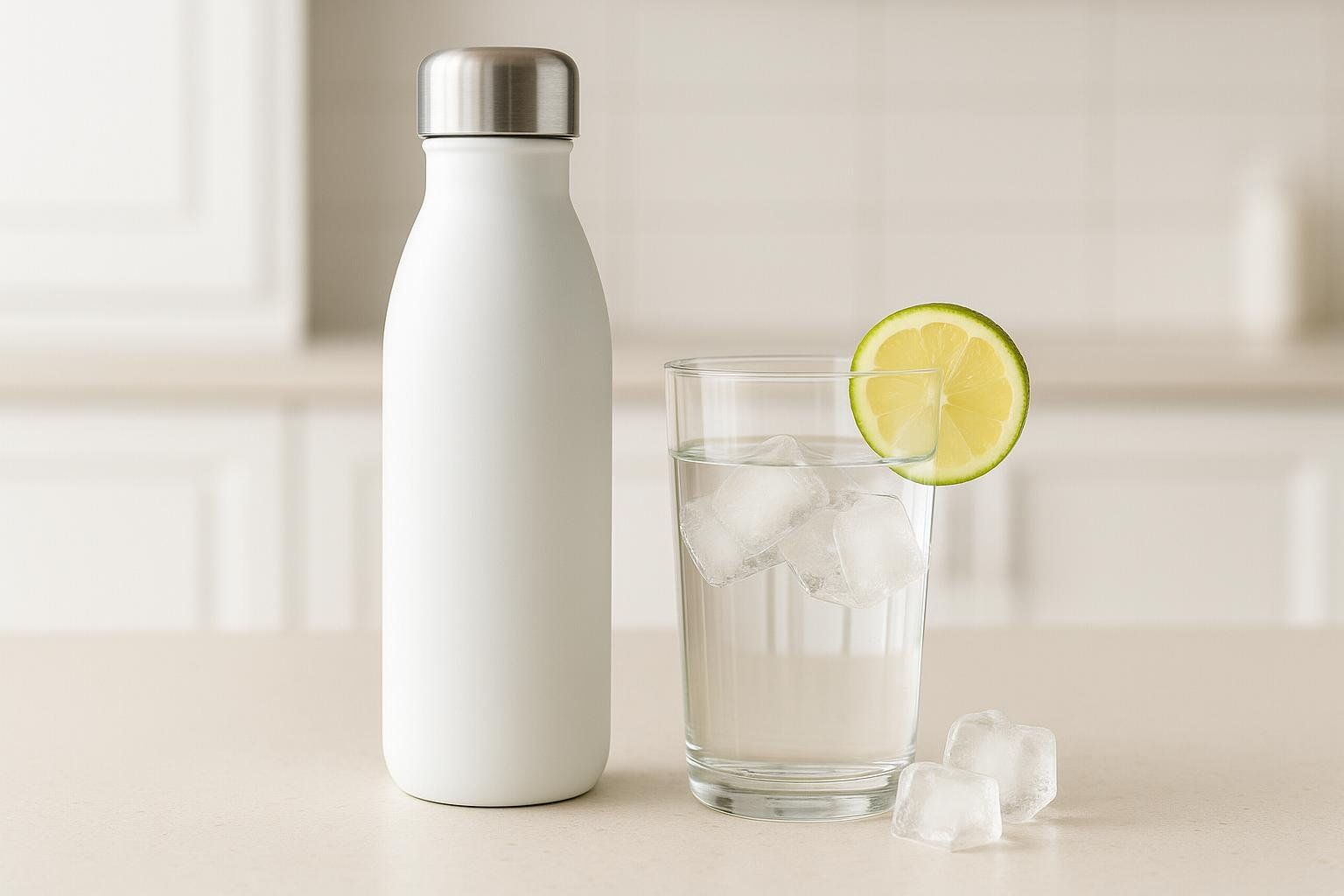
- Create a small calorie deficit (10–20 %). Fast fixes often backfire—aim to lose ~0.5–1 lb per week.
- Prioritize protein. Aim for a total daily intake of 0.7–1.0 g per lb of body weight, spread across meals, to protect muscle during fat loss (2018 meta-analysis).
- Fill half your plate with produce. Fiber keeps you full; micronutrients support recovery.
- Hydrate. Even 2 % dehydration can sap power output.
- Grab a pre-workout snack. A banana or small yogurt 30 min before training boosts energy.
Need a deeper dive into sustainable eating? Visit Building Long-Term Weight-Loss Habits.
Track Progress Like a Scientist
The scale alone can’t show you if that pound lost was fat or muscle. A DEXA scan breaks down:
- Lean vs. fat mass in each leg
- Bone density (strong bones = safer training)
- Visceral fat around organs
Check every 6–12 weeks to confirm your program is adding—or at least preserving—muscle while trimming fat. Learn more in What Is Body Composition?.
FAQs for Beginners
How soon will I see results? Subtle firmness can show up in 4–6 weeks; visible definition often appears by 8–12 weeks with consistent workouts and nutrition.
Do I need heavy weights? Not at first. Bodyweight and light bands create plenty of stimulus for beginners. Increase challenge only when the last two reps feel too easy.
Will lifting make my thighs bulky? Building significant muscle size usually requires a sustained calorie surplus plus high training volumes. A 2022 meta-analysis in Scandinavian Journal of Medicine & Science in Sports supports this: participants training in a 500-kilocalorie energy deficit prevented lean-mass gains but still improved strength.
Best cardio for slimming thighs? Anything you’ll do regularly—walking, cycling, dance, rowing. Consistency > perfection.
Is the inner-thigh gap realistic? Genetics largely decide hip width and thigh shape. Focus on strength and healthy body-fat levels; definition will follow.
The Bottom Line
“Toned” thighs result from the dual approach of muscle-building workouts and nutrition that sheds excess fat. Start with two 30-minute sessions this week, tidy up your plate, sleep well, and book a BodySpec DEXA scan to watch the numbers move in the right direction. Stay patient and your jeans—and confidence—will fit better every month.
